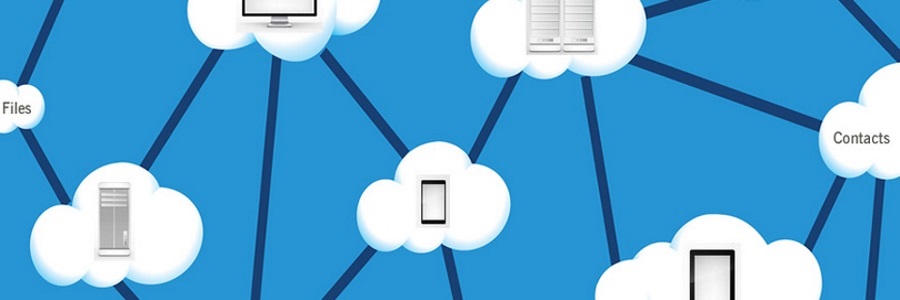You use connected devices and systems like Alexa, smartwatches and smartphones to perform everyday actions. In the workplace, enterprise systems for accounting, customer relationship management and enterprise resource planning have also become increasingly interconnected. Known as Enterprise System Integration, connecting enterprise systems maximizes the value of each solution to your organization.
What is Enterprise System Integration?
Enterprise System Integration is the process of connecting existing systems to share and communicate information. Often, connected systems also take on new functionalities.
For instance, a CRM system might need to call the accounting system’s application programming interface (API) to access customer account information.
Integrating systems with distinct software and hardware brings a new set of challenges for engineers. New systems integration solutions have emerged for passing flat files between systems, direct database queries, hard-wired API calls, middleware/service bus solutions and others.
In this post, we’ll compare two enterprise systems integration concepts and reveal enterprise system integration tools to ease the process.
Comparing Popular Enterprise System Integration Methods
Tightly coupled system integration and service-oriented architecture are two common systems integration approaches. Let’s dive into the distinctions of each:
Tightly Coupled System Integration
When systems are tightly coupled, an application is developed to allow the requesting system to directly call the API of the responding system. This application will create the request from data in the requesting system, transport the request and response (typically) and translate the response from the responding system into something the requesting system can use. This is illustrated in Figure 1 below.
This is a common pattern in Enterprise System Integration. Organizations often approach integration this way because it’s initially less expensive, less complex to set up or they simply don’t know better. However, this integration paradigm will cost your organization exponentially more time, money and peace of mind when you need to upgrade or replace the core system in question (the accounting system in Figure 1.)
When the accounting system API changes due to an upgrade or system replacement, you must redevelop and test each integration point (represented by red lines in Figure 1). This is no small task — and often a major reason organizations tolerate dated or difficult-to-use core systems. It’s simply too complex or too large of a project to replace the system.
AppDev-Blog-May-2017-PIC
Figure 1
Breaking Down Service-Oriented Architecture
Fortunately, a better architectural pattern exists for enterprise system integration — called service-oriented architecture (SOA). The concept of SOA has long been used in general software development and integration frameworks. At its core, SOA promotes loose coupling, flexibility and reusability that tightly coupled architecture cannot provide.
When software developers use the term “loose coupling,” they’re referring to a separation of concerns. This means changes in one system don’t directly impact changes in another system; each system is only concerned with its own function.
In this pattern, a request from one system is translated into an intermediate format called a canonical message. A canonical message (in this context) represents business functionality across the enterprise.
Advantages of the SOA IT Integration Method
At first glance, this service-oriented architecture approach appears to require more work.
For instance, Figure 1 involves 10 message translations (one response and one request translation per system) while Figure 2 requires 12 (one response and one request translation to canonical per system and one response and one request translation from the canonical to the account system.)
Here are two major payoffs of the service-oriented architecture appraoch:
Compatibility: The accounting system doesn’t have to be compatible with the message format a requesting system generates. The message the requesting system generates will be translated into a format the EIF can process (the canonical message). The accounting system is completely uninvolved in what happens beyond the EIF. This is extremely helpful when adding new systems that require access to systems that are already part of the EIF.
Ease of switching systems: The loosely coupled nature of this architecture makes switching accounting systems much simpler and cheaper than if all connections were hardwired to the accounting system. If your company needs to modernize its accounting system and has an architecture similar to Figure 1, you’ll need to redevelop all 10 translations — and migrate the accounting data.
In Figure 2, the connections between the accounting system and the EIF (designated in red) are the only points you must redevelop. This dramatically decreases overall project time and risks associated with system replacement. While setting up an enterprise EIF takes extra planning and effort, it’s a necessary component to provide the flexibility and adaptability your organization needs to thrive in an fast-changing and increasingly connected technical landscape.
AppDev-Blog-May-2017-PIC-2
Figure 2
IT Systems Integration Tools for the Enterprise
Many tools exist for enterprise systems integration, but some are more suitable for transaction-based processing. These include:
Microsoft BizTalk 2016 Server
Mulesoft
Tibco Businessworks
These systems are great for processing high volumes of real-time transactions. Each has its own benefits and drawbacks that you’ll want to explore for your own organization.
This alone saves an integration developer hours of development time. BizTalk Server also provides reliable messaging so nothing is ever “lost” once BizTalk receives the message. This is crucial in Enterprise System Integration.
Connect your critical Enterprise Systems with confidence
When critical business systems can communicate freely, your IT team and employees save time and headache.
But like any complex data-sharing project, you don’t want to leave anything to chance. Working with an experienced partner is the safest way to guarantee success.





















+ There are no comments
Add yours